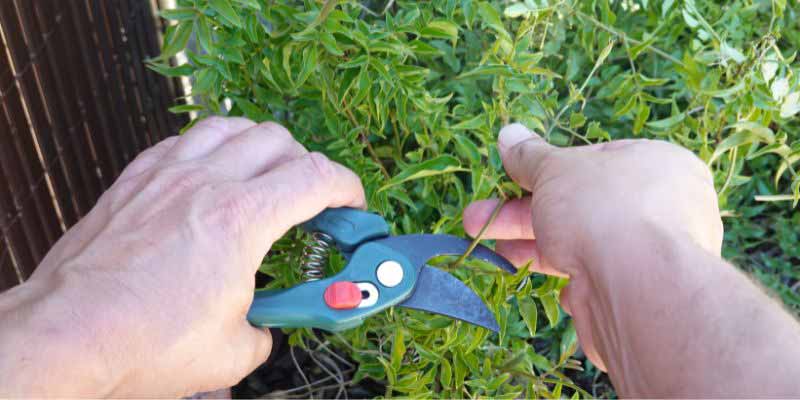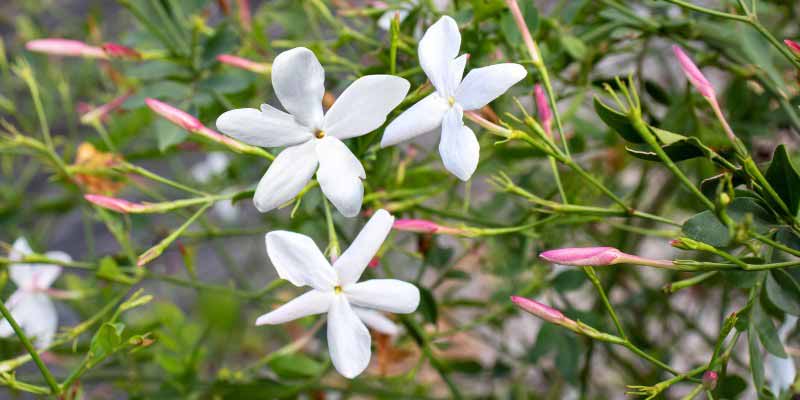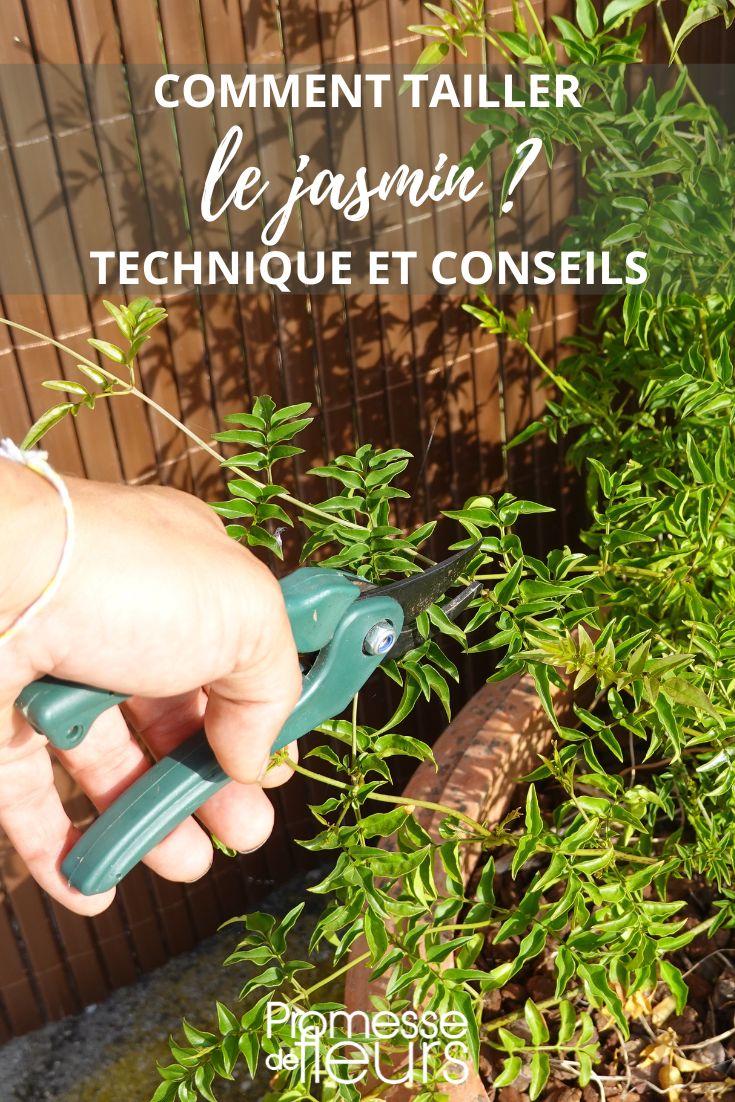Jasmine is a graceful climbing plant prized for its elegant foliage and star-shaped white, yellow or pink flowers with a delightfully heady fragrance. Its long woody climbing stems or voluble stems typically reach 5–6 metres in height in favourable conditions and twine around any support provided: trellises, lattice screens, stair or balcony railings, arches, arbors and even containers. It can grow freely or be trained. However, it requires maintenance pruning to remain healthy, compact and well-flowered. A well-managed prune stimulates the growth of new shoots and ensures generous flowering. Discover why, when and how to prune your jasmine to get the best from this climbing plant!
Why prune jasmine?
The habit of jasmine varies by species, some being more bushy than climbing, which affects pruning needs. Certain varieties, such as Jasminum officinale or star jasmine (Trachelospermum jasminoides) can be trained on a trellis or against a wall to climb up to 10 m in favourable conditions thanks to relatively rapid growth. Without a support, these jasmines spread naturally over the ground, forming a slightly untidy shrub. Others are used as groundcover, such as ‘Ogon Nishiki’, which slowly forms a small dense cushion not exceeding 1.50 m in height. Jasmine is very vigorous and can become bare at the base. That is why pruning of the oldest stems is necessary and regular balancing pruning is sufficient. Pruning jasmine is essential to control its spread and encourage growth of vigorous young shoots. Without pruning, jasmine can become invasive and lose its harmonious shape.

When to prune jasmine?
An annual pruning is recommended. You can prune in late winter, at the start of growth, or after each flowering. The presence of congested branches, reduced flowering or stems that become too long and bare at their base are all signs that it is time to prune!
How to prune jasmine: steps and types of pruning
Use clean tools to prevent transmission of disease. When pruning, make clean cuts. To prune your jasmine you will need:
- a pruning shear
- a shear for thicker branches

To prune jasmine effectively, follow these steps according to plant age and pruning objectives:
- Maintenance pruning
After each flowering, carry out a light prune to control jasmine's growth. Remove shoots that protrude or become entangled, cutting just above an outward-facing bud. Also remove weak, dry or damaged stems that limit the development of new shoots. Remove dead stems by cutting at their base, and prune those that are bare or whose leaves have yellowed. - Pinching
Pinching is particularly useful to stimulate branching and encourage denser growth, especially on young plants or after a light prune. In spring or during the season, pinch out the tip of young shoots when they reach 30 cm between thumb and forefinger or using a small pruning shear. By removing the terminal bud, the plant redirects its energy to lateral buds, thus promoting development of new stems. It is particularly useful on climbing jasmines to help them cover a support evenly or on bushy jasmines to maintain a compact, well-furnished habit. - Rejuvenation pruning for mature jasmines
For jasmines older than three years, pruning is recommended to rejuvenate a somewhat ageing plant, often bare at the base, and to encourage formation of new, more vigorous and more floriferous shoots. Jasmine tolerates severe pruning very well. In autumn, cut back at the base between a quarter and a fifth of the oldest stems. It can be cut back to 20 cm from the ground.

Post-pruning care tips
After pruning jasmine, it is important to provide appropriate care to support recovery, stimulate growth and maintain overall health.
Watering
Pruning can be stressful for the plant, especially in hot weather. After pruning, water jasmine generously to thoroughly moisten the soil down to the roots. Adequate water encourages recovery and prevents new shoots drying out. In summer, water regularly but without excess to avoid risk of rot.
Feeding
A few days after pruning, a light application of low-nitrogen liquid fertiliser (rose fertiliser) diluted in the watering water will help the plant regenerate.
Mulching
After pruning and watering, mulching around jasmine’s base is recommended. Use organic materials such as pine bark, straw or compost. Mulch helps retain moisture in the soil, protect roots from heat and limit weed growth. In addition, as it decomposes, it gradually enriches the soil with organic matter.
Monitoring diseases and pests
Jasmine has few enemies. However, fresh cuts can temporarily weaken the plant. Watch for signs of fungal diseases (black spots, downy mildew) or pests such as aphids or mealybugs. If necessary, apply a natural treatment such as diluted black soap or a garlic infusion as a preventive measure.
→ Learn more about diseases and pests of jasmine in our advice sheet.
Manage training
Pruning is also an opportunity to redirect branches. Take advantage of the reduced volume to reposition and tie in shoots that are moving away from the structure.

































Comments